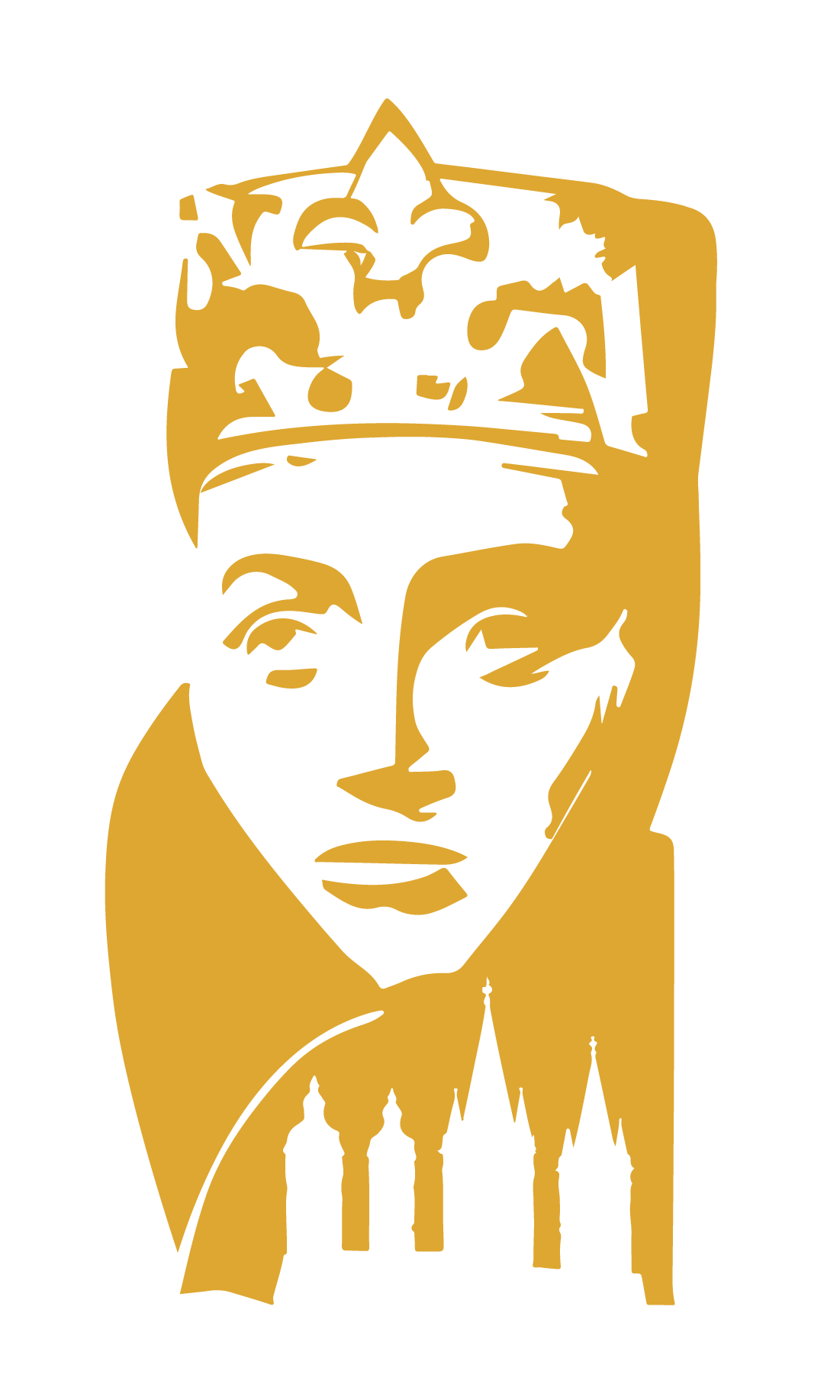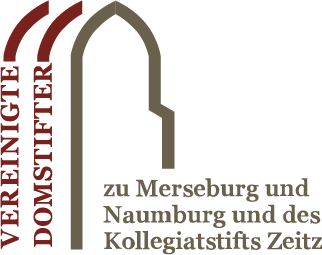Naumburg Cathedral World Heritage Site
One of the most significant cultural monuments of the high middle ages, the late-Romanesque and early-Gothic cathedral is a major visitor attraction on the “Romanesque Route” and has held the title of UNESCO World Heritage Site since 1 July 2018. The star attraction is the West Choir with its twelve statues of the cathedral’s donors. The interplay between architecture, sculpture and glasswork, created by the hands of a sculptural architect, represent a masterpiece of human creativity. The Namburg Master and the workshop he established at the start of the 13th century are testimony to the cultural exchange that was already in place in medieval Europe, with aspects of his style traceable from north-west France, via Germany to south-west Europe.
Visitors are spellbound by the vibrancy and expressiveness of the 12 statues depicting the cathedral’s donors. The noblewoman known as Uta, in particular, is considered by many to be the “most beautiful woman of the middle ages”. The two high-medieval choir screens separating the choirs from the nave are also highly impressive. Indeed, this is the only church in the world to house two such screens! Romanesque and Gothic masterpieces blend with spectacular pieces of modern art to create a stunning impression. However, the cathedral has much more to amaze visitors.
Learn all about the cathedral with the audio guide or on a guided tour.
The Audio guide can be downloaded before your visit.
Here you can get an impression of the virtual tour through the cathedral or here at the 360° degree video.
The East Choir
Handrails by Heinrich Apel
Two modern handrails made of bronze adorn the stairs leading to the East Choir. They were designed by the Magdeburg-based artist Heinrich Apel. Rich in detail, these artworks each have a story to tell. “Saint Francis and the animals” (1972) shows the monk Francis of Assisi preaching to the birds. “The narrow path to paradise” (1983) depicts the arduous route humans have to take to reach paradise. The path is embodied by a snake up which humans clamber towards the gate of paradise. The snake’s head sits at the very bottom with the devil riding on its back. Both handrails contain lots of lovingly-created detail to discover and touch: animals, plants and figures from the bible or ancient mythology.
The Crypt
Visitors entering the crypt are immediately overwhelmed by its simplicity. The triple naves of the hall crypt form the oldest part of Naumburg Cathedral and date back to the 12th and 13th centuries.
The central part with its Romanesque columns and block capitals contains a particular feature: two wall lights in the form of a prophet and a female angel, created by the artist Heinrich Apel.
Looking towards the altar reveals a Romanesque crucifix with Christ the Triumphant (around 1160/70) on the left hand-side, while on the right are two modern glass windows made by the artist Thomas Kuzio (2012/2014).
The Nave
The transition from Romanesque to Gothic flows through the cathedral’s nave and two side aisles. It also provides a unique view, with two choir screens separating it from the east and west choirs – the only such configuration in the world! While daylight largely shines unimpaired through the windows of the central nave, the windows in the side aisles contain stained-glass canon windows dating from the start of the 20th century which depict the coats of arms of noble canons. A statue of Luther on the pulpit provides a reminder of the investiture of the world’s first evangelical bishop, Nikolaus von Amsdorf, at Naumburg Cathedral. He was ordained by Martin Luther himself in 1542. The organ was built by the company Eule from Bautzen in 1982.
The East Choir Screen
One of the oldest indoor choir screens in Germany (built around circa 1220) can be found in Naumburg Cathedral. Its three Romanesque arches lend it the character typical of a small hall, while a Gothic crucifix (16th century) sits above a Romanesque frieze of rounded arches depicting various holy figures.
Every Sunday, evangelical services are held in front of the altar of the central cross which sits under the central arch.
The West Choir Screen
The West Choir Screen in Naumburg Cathedral is unique. In eight individual pictures it depicts the events in the bible from Maundy Thursday to Christ bearing the cross. The colourful reliefs show figures with such vibrancy and movement modern-day visitors are imbued with a real sense of the drama of the events of the Passion.
The highlight is the life-sized crucifixion with Christ, the holy mother Mary and the favourite disciple John, who together form the entrance to the West Choir. The plants on the capitals, cornices and cap stones have been realistically worked out of stone. Cherries, hazelnut and ivy can be seen, naturally alongside vines bearing grapes which can also be found in the “Naumburg Master’s Garden”.
The West Choir
The West Choir at Naumburg binds together architecture, sculpture and glasswork. Everything suggests that the overall leadership for its construction and decoration lay in the hands of a single sculptural architect whose steps can be traced right across Europe from north France via Mainz to Naumburg and Meissen. The anonymous architect and stonemason – known as the Naumburg Master – created his most famous work in the West Choir, with the support of his workshop, in just six years of the mid-13th century. - – together with his building lodge, erected his main work in the west choir in only six years in the middle of the 13th century.
As part of the project Glass Restorations in Naumburg Cathedral all five stained-glass windows of the West Choir were restored through extensive measures from 2017 to the beginning of 2019.
In 1519, Lucas Cranach the Elder created a three-panelled altarpiece for the Marian altar in Naumburg's west choir. The centrepiece of the retable, which depicts the Virgin and Child, was destroyed in 1541 as part of an anti-pictorial campaign. As a result, the west choir lost its patron saint. After more than 500 years, the two original wings were supplemented by a new centrepiece and predella created by the Leipzig artist Michael Triegel. With this altarpiece, the west choir of Naumburg Cathedral temporarily regained its liturgical centrepiece in June 2022.
The donor statues
Above all, the twelve statues of the cathedral’s donors are unique, with their extraordinary and captivating artistic quality and their impressive vibrancy, expressiveness and life-like nature. They depict Count and Countess Gerburg, Konrad, Hermann and Reglindis, Dietmar, Syzzo, Thimo, Ekkehard and Uta, Gepa – also known as Berchta – and Dietrich, who lived during the 10th and 11th centuries. From their number, Uta – a noblewoman with the title of Margravine – stands out in particular, exuding a sense of grace, high status and strong will yet also vulnerability and mystery. She is considered to be the “most beautiful woman of the middle ages” and was the inspiration for Walt Disney’s wicked queen in his film version of Snow White, thus bringing the cathedral to international attention.
Every two years, the UTA meeting takes place in Naumburg. People from all over the world who bear the name of a donor statue come together for an eventful weekend in Naumburg.
The Chapel of St Elizabeth
Almost inconspicuous, the entrance to the Romanesque Chapel of St Elizabeth which features the oldest stone sculpture of St Elizabeth von Thuringia is easily missed. But don’t walk past without looking inside!
The mysterious sculpture of the noblewoman – again in the Romanesque style – has been dated using current science to shortly before the canonisation of Elizabeth (after 1235) and is thus the oldest statue of the saint made of stone.
Since 2007, the Chapel has been fitted with modern glass windows featuring scenes from the saint’s life, created by the Leipzig-based painter Neo Rauch in a striking red, which especially on sunny afternoons gives the chapel a particularly warm ambience.
Other Cathedral Chapels
The Baptism Chapel
Immediately after crossing the main portal, the Baptism Chapel (also known as St Stephen’s Chapel) and its Romanesque font, opens to the side. The three round arch windows are particularly impressive. Two of these windows were created by the artist Thomas Kuzio, who incorporated references to the third window in his design.
Evangelists Chapel
The Evangelists Chapel is located under the Cathedral’s south west tower (approx. 1220). Its present-day name is based on the murals whose remains were discovered in the 19th century. Three windows in the chapel were created by the artist Jochem Poensgen in 2013. The altarpiece dates from the 16th century and was originally from Naumburg before being sold by the congregation of St Othmar’s church in 1915 to the Angermuseum in Erfurt (currently on loan from the Angermuseum).
The Chapel of the Three Kings
Built during the 15th century, the late-Gothic Chapel of the Three Kings, reached from the Cathedral Square via an external staircase, can be recognised from afar thanks to the striking group of statues depicting the three Kings from the nativity story, Mary and child. The radiating vault inside the chapel and the stained three king window dating from the 19th century are spectacular. It offers a place of quiet away from the hustle and bustle of the street and the streams of tourists.



